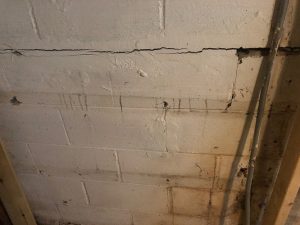The foundation is the bedrock of any structure, providing essential support and stability. However, bowing foundation walls can emerge as a cause for concern, signifying potential structural issues that demand immediate attention. In this article, we delve into the professional considerations and solutions for addressing bowing foundation walls, emphasizing the importance of proactive measures to ensure the long-term stability and safety of a building.
Understanding Bowing Foundation Walls:
Bowing foundation walls refer to the inward or outward curvature of the walls that make up the foundation. This deviation from the vertical can be caused by a variety of factors, including soil pressure, water damage, or the natural settling of the building. Recognizing the signs of bowing walls, such as cracks, displacement, or visible leaning, is crucial in identifying potential structural concerns.
Early Detection and Professional Assessment:
Early detection of bowing foundation walls is paramount to preventing further damage. Homeowners and building managers should conduct regular visual inspections, paying attention to any signs of bowing, cracking, or uneven settling. However, it is equally important to seek the expertise of professional structural engineers or foundation specialists to conduct a thorough assessment. Their trained eye and specialized knowledge can provide a comprehensive understanding of the extent and causes of the bowing, guiding appropriate remediation strategies.
Soil Pressure Management:
Excessive soil pressure is a common cause of bowing foundation walls. Professional solutions often involve managing and mitigating this pressure through techniques such as installing proper drainage systems, reinforcing the foundation with anchors or piers, or implementing soil stabilization methods. These measures not only address the immediate concerns but also prevent the recurrence of bowing walls in the future.
Carbon Fiber Reinforcement:
Carbon fiber reinforcement is a cutting-edge solution employed by professionals to stabilize and strengthen bowing foundation walls. Carbon fiber straps or sheets are applied directly to the affected walls, creating a high-strength, low-profile reinforcement. This method is non-intrusive, quick to install, and effectively counteracts the forces causing the bowing, providing a durable and long-lasting solution.
Helical Tieback Anchors:
Helical tieback anchors are commonly used to stabilize bowing foundation walls. These anchors are drilled into the soil outside the affected area and connected to the foundation wall. As they are tightened, they exert lateral pressure on the wall, counteracting the forces causing the bowing. Helical tieback anchors provide reliable support and can be adjusted over time, making them a versatile solution for various foundation configurations.
Wall Bracing and I-Beam Reinforcement:
In cases of severe bowing, wall bracing or I-beam reinforcement may be recommended. This involves installing vertical or diagonal braces against the bowing wall or placing steel I-beams to provide additional support. Professional structural engineers assess the specific requirements and design a bracing or reinforcement plan tailored to the unique characteristics of the foundation.
Waterproofing and Drainage Solutions:
Water damage is often a contributing factor to bowing foundation walls. Implementing professional waterproofing measures, such as exterior drainage systems, proper grading, and foundation coatings, helps manage water runoff and prevent excessive moisture infiltration. This not only addresses existing concerns but also serves as a preventive measure against future bowing caused by water-related issues.
Professional Construction and Repair Contractors:
Undertaking the repair of bowing foundation walls requires specialized knowledge and expertise. Engaging professional construction and repair contractors with experience in foundation work is essential. These professionals adhere to industry standards, utilize advanced technologies, and follow best practices to ensure the structural stability of the foundation.
Ongoing Maintenance and Monitoring:
Once the bowing foundation walls have been addressed, it is crucial to implement a regimen of ongoing maintenance and monitoring. This may include regular inspections, especially after significant weather events, and addressing any signs of movement promptly. Proactive maintenance ensures the longevity of the repair work and minimizes the risk of future structural issues.
Bowing foundation walls pose a serious threat to the stability of a building, requiring prompt and professional attention. Homeowners, property managers, and builders should prioritize early detection, engage the services of qualified professionals for thorough assessments, and implement tailored solutions to address the specific causes of bowing. From soil pressure management to advanced reinforcement techniques, the array of professional solutions available ensures that bowing foundation walls can be stabilized, strengthened, and restored to their intended structural integrity. By taking proactive measures, property owners can safeguard their investments, ensuring the long-term stability and safety of their structures.
Contact the Professionals at Everdry Waterproofing Of Columbus Today! (614) 850-5600




